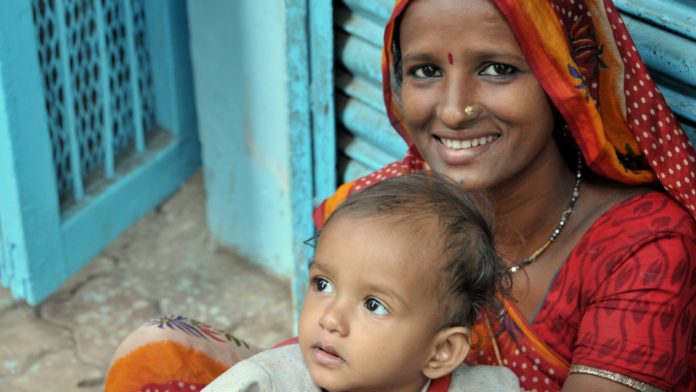Between 2005 and 2015, the lives of one million children in India were saved by dramatic government initiatives to improve basic health services for children. And according to a new study led by a UofT researcher, millions more could be saved if programs adopted in three of its major states are instituted nationwide.
India saw significant reductions in diseases such as pneumonia and diarrhea, which went down by over 60%, while measles and tetanus deaths dropped by roughly 90%. The gender disparity also narrowed so much that the number of deaths was nearly equal between boys and girls in 2015.
“This accelerated decline has occurred mostly because of expanded government attention, since 2005, to basic health services for children,” said co-author Dr Prabhat Jha, head of the Centre for Global Health Research at St. Michael’s Hospital in Toronto.
Conversely, term-births with low birth weight increased nationally overall, especially in rural areas. Lowering neonatal (less than one month old) deaths will be a crucial factor in India’s commitment to meet the UN’s Sustainable Development Goals of halving its child mortality rate by 2030.
To achieve this, Jha believes that India will have to make a special effort to tackle prenatal and maternal issues such as maternal nutrition, anaemia, poor education, and tobacco use.
Door-to-door verbal autopsies
The study, known as the Million Death Study, involved specially trained staff who visited thousands of randomly selected homes across the country, where families gave an account of a child’s death. In India, most people die at home without medical attention, so there is little in the way of a medical register of deaths and births.
Based on these “verbal autopsies”, a pair of physicians made independent assessments of the cause of death to build a comprehensive understanding of key trends in national child mortality.
“You get the truth when you knock on doors and talk to parents,” said Dr Jha. “We knocked on the doors of 100,000 homes where children died. If the health system failed these families, they will tell you all about it. These are far more reliable numbers than models or projections from small studies.”
According to this study, there was an annual decline of roughly 3.3% in neonatal mortality rates and 5.4% for children under 5. From 2005, there was a noticeable acceleration in the decline, which was fastest during the 2010-2015 period.
Federal health standards will be the deciding factor
The government has a record of low public spending on health, but in 2005, a program was launched to encourage women to give birth in hospitals and for children to receive a second round of the measles vaccine.
India makes up approximately one-fifth of global child deaths, so global progress is heavily dependent on efforts in this country. Since 2000, about 29 million children died in India, but due to the faster progress since 2005, a further one million survived.
“If the whole of India had achieved [the 2015 progress rates] seen in three of the major states (Tamil Nadu, Maharashtra, and Karnataka), only 27 million deaths would have occurred – i.e. three million lives saved,” said Jha. “This means that the much higher coverage and quality of health services in these states would have had to have occurred nationally.”
Nonetheless, the 2030 goal can still be achieved by ensuring healthcare standards in every region as well as fighting neonatal mortality. Indian child mortality may be a monumental challenge, but this report shows that a concerted effort by the Indian government and international bodies will significantly reduce its impact.








































